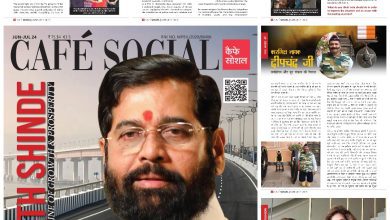CELEBRATION AND FESTIVAL ARE SOUL OF SANATANA: GLIMPSE OF DASARA CELEBRATION OF KARNATAKA

“Celebrating Dasara, the festival of Vijayadashami, is India’s harmonious symphony of diverse traditions, all uniting to herald the triumph of good over evil.”
~ Munindra Misra
Dasara, the grand tapestry of India’s victory and tradition, weaves together a vibrant mosaic of celebrations across the nation during October, culminating in the glorious triumph of Vijayadashami. From North to South, this festival bridges the cultural diversity of India, entwining unique customs and the resonance of epic legends.
In North India, the festival is deeply rooted in the Ramayana, marked by the fiery effigies of Ravana, Kumbhakaran, and Meghnad. The Ramlila, a nine-day enactment of Rama’s saga, crescendos with the symbolic vanquishing of Ravana on the tenth day.
In South India, Dasara signifies the victorious reign of Goddess Chamundeshwari (Durga) over the demon Mahishasura. The devotion extends to the ceremonial worship of weapons and days of fasting. Karnataka elevates Dasara to a state festival, known as Nadahabba, a legacy initiated by the illustrious Wodeyars, the Royal Family of Mysore. During this period, Mysore transforms into a dazzling spectacle, beckoning millions of curious travelers.

The royal family orchestrates special poojas, and the Mysore Palace becomes a luminous masterpiece adorned with over 100,000 light bulbs. Amid the festivities, you’ll witness athletic showdowns, captivating dance performances, harmonious melodies, scintillating fireworks, and a resplendent military parade.
The grandeur reaches its zenith during the traditional Dasara procession, Jumboo Savari, featuring an exquisite idol of Goddess Chamundeshwari atop a magnificently adorned elephant. Dasara beautifully binds India together, as its honors victory and tradition, reflecting the nation’s unity in diversity. It’s a testimony to the rich tapestry of India’s culture, where each thread contributes to the grand mosaic of this cherished festival, celebrating unity, triumph, and the enduring spirit of tradition.
By Poojitha Nakul







